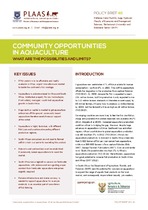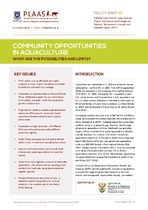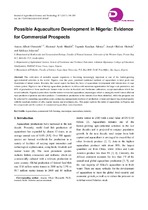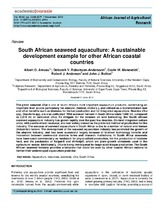Browsing by Subject "Aquaculture"
Now showing items 1-4 of 4
-
Community opportunities in aquaculture, What are the possibilities and limits?
(Institute for Poverty, Land and Agrarian Studies, University of the Western Cape, 2016)Aquaculture now contributes 47% of fish available for human consumption – up from 9% in 1980. This shift to aquaculture offsets the stagnation in the production from capture fisheries (FAO 2012). By 2030, demand for ... -
Community opportunities in aquaculture: what are the possibilities and limits?
(Institute for Poverty, Land and Agrarian Studies, University of the Western Cape, 2016)Aquaculture now contributes 47% of fish available for human consumption – up from 9% in 1980. This shift to aquaculture offsets the stagnation in the production from capture fisheries (FAO 2012). By 2030, demand for ... -
Possible aquaculture development in Nigeria: evidence for commercial prospects
(David Publishing, 2017)The cultivation of desirable aquatic organisms is becoming increasingly important as one of the fastest-growing agro-industrial activities in the world. Nigeria, over the years, practised traditional methods of aquaculture ... -
South African seaweed aquaculture: A sustainable development example for other African coastal countries
(Academic Journals, 2013)The green seaweed Ulva is one of South Africa's most important aquaculture products, constituting an important feed source particularly for abalone (Haliotis midae L.), and utilized as a bioremediation tool and other ...




